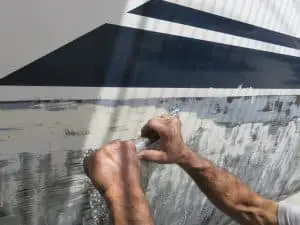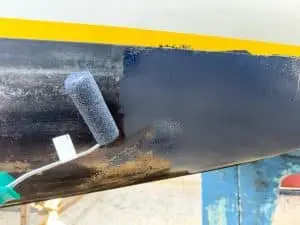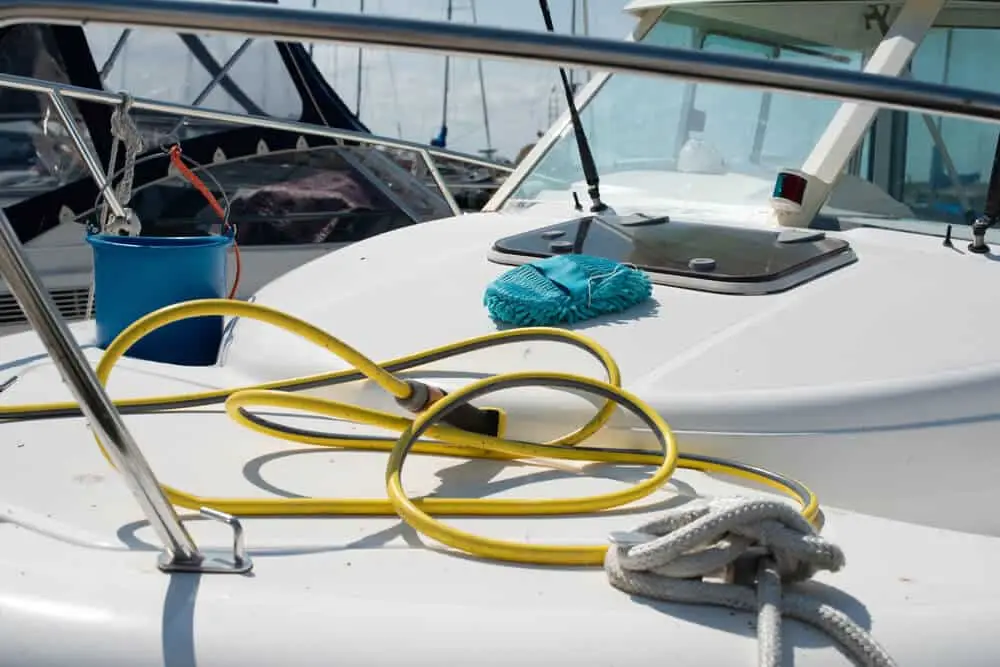- Blog
- July 7, 2025
Applying antifouling: how to protect your boat from fouling
Applying antifouling is essential to protect your boat from fouling by algae, mussels and other organisms. It allows your vessel to glide smoothly through the water and reduces fuel consumption. Applying antifouling requires careful preparation and execution. In this blog you will read step by step how best to go about it.
This blog in brief
- Antifouling protects your boat from fouling and prevents loss of performance
- The ideal time to apply antifouling is in spring when temperatures are mild
- For polyester boats, proper preparation, sanding and layering is essential
- You can paint over an old coat, provided it is still in good condition
- Annual inspection and reapplication if necessary keeps your boat in top condition
What is antifouling and why is it important?
Antifouling is a special paint that protects your boat's underwater hull from fouling organisms. This fouling can reduce the performance of your boat and cause damage to the hull. Applying antifouling regularly keeps your boat in optimal condition and extends its life. In addition, you save on fuel costs because the boat experiences less drag while sailing.
When to apply antifouling?
The best time to apply antifouling is in the spring, just before you launch your boat. This will ensure optimal protection during the boating season. Make sure the temperature during application is between 10 and 25 degrees Celsius for proper paint adhesion and curing. Also pay attention to the drying time; you usually have to wait 24 to 48 hours before the boat can be launched again.
How do you apply antifouling to a polyester boat?
Applying antifouling to a polyester boat requires a number of steps:
- Preparation: Clean the underwater ship thoroughly and remove old coats of antifouling if necessary.
- Sanding: Lightly sand the surface to ensure good adhesion of the new coat.
- Masking: Tape off the waterline and other areas that should not be painted with painter's tape.
- Apply: Apply antifouling with a roller or brush, according to the manufacturer's instructions.
Be sure to wear proper personal protective equipment during application, such as gloves, goggles and a dust mask.
How many coats of antifouling are needed?
The number of coats of antifouling required depends on the type of paint and the manufacturer's instructions. In general, two coats are recommended for good protection. Areas of high turbulence, such as the bow and waterline, may require an additional coat. Make sure each coat is completely dry before applying the next.
Can I apply antifouling over an old coat?
Yes, you can apply antifouling over an old coat, provided it is in good condition. Make sure the old coat is not peeling or damaged. Lightly sand the surface and clean it thoroughly before applying the new coat. If the old coat is in poor condition, it is better to remove it completely before applying new antifouling.
Apply antifouling yourself or outsource? Choose what suits you
Applying antifouling can be done just fine by yourself, provided you prepare it properly and use the right materials. Still, many boat owners choose to outsource it, especially if they have little time or want assurance of quality. Whatever you choose, make sure that your boat is well protected when it hits the water.
Would you prefer carefree boating without the hassle? With a Vaarzeker subscription you are assured of assistance in the event of a breakdown, even if your boat has engine problems.
- Towing services and engine failure assistance
- On-site or port repair
- Telephone technical advice
- No unexpected costs, only material costs
For boats up to 10 meters from €19 per month. Check out the options and sail with peace of mind. Any questions? Feel free to contact on with our team, we are here for you.
Frequently asked questions about antifouling application
How often should I apply antifouling?
It depends on the type of antifouling and the use of your boat. Generally, it is recommended that a new coat be applied annually.
Is antifouling environmentally friendly?
Some antifouling products contain harmful substances. However, there are environmentally friendly options available. Check with the supplier for the best choice for your situation.
Can I apply antifouling myself?
Yes, with proper preparation and safety precautions, you can apply antifouling yourself. Be sure to follow the manufacturer's instructions carefully.
What are the risks of not applying antifouling?
Without antifouling, fouling can develop on the underwater hull, leading to reduced performance, increased fuel costs and possible hull damage.
What types of antifouling are there?
There are hard and self-sharpening (soft) antifouling products. Hard antifouling is suitable for fast boats and dry-docking, while self-sharpening antifouling is better for slower boats.
Need help choosing?
Need help choosing a subscription? Then use our handy selection guide.
Newsletter subscription
Fill out the form below to become a member of our newsletter





